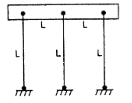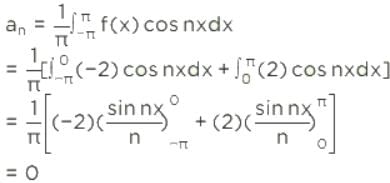Gate Mock Test Civil Engineering (CE)- 4 - Civil Engineering (CE) MCQ
30 Questions MCQ Test - Gate Mock Test Civil Engineering (CE)- 4
Directions: Select the option, which is nearest in meaning to the given keyword.
SUBTLE
Directions: In the following question, four positions of the same dice having different characters are shown.

Which character is on the surface opposite to '+'?

Directions: Choose the correct meaning of the given word from the options given below.
Beseech
Directions: In the following question, choose the word which best fills the blank from the four options given.
The present _______ has not prevented the railway minister from announcing an increase in the number of super fast trains.
The chances of winning of two racehorses are 1/3 and 1/6. The probability that at least one will win when the horses are running in different races is
Three pipes A, B and C are attached to a tank. A and B can fill it in 20 and 30 minutes, respectively, while C can empty it in 15 minutes. If A, B and C are kept open successively for 1 minute each, how soon will the tank be filled if pipe A is opened first?
Directions: Figure (A) below shows an unfolded cubical dice. This unfolded figure is followed by four different figures of dice. You have to select the figure which is identical to figure (A).

Directions: In the following question, a square transparent sheet with a pattern is given. Figure out from among the four alternatives as to how the pattern will appear when the transparent sheet is folded along the dotted line.

Directions: This problem consists of a question followed by two statements numbered I and II given below it. Read the statements carefully and decide which of them is/are sufficient/necessary to answer the question.
S is to the north of P and T is to the east of S. What is the exact distance between P and T?
I. Distance between S and T is double the distance between S and P.
II. Distance between S and T is 4 cm.
Following table gives the set of 10 measurements that were recorded by a student working on an experiment in the laboratory.

The precision of the 6th measurement is (Answer up to three decimal places)
Instruction: [This is a multiple-select question, one or more than one option can be correct]
After conducting a slump cone test on the work site for two different batches of concrete 'X' and 'Y', the following results were obtained:
1) 'X' batch shows zero slump
2) 'Y' batch shows collapsed slump
For the above results, the correct option is/are
For a turbulent pipe, if the ratio of roughness coefficient to laminar sublayer thickness (k/ẟ) < 0.25, then the pipe is classified as
For a steady hydraulic jump, Froude's number F is
Given that
PE = the crippling load given by Euler
PC = the load at failure due to direct compression
PR = the load in accordance with the Rankine's criterion of failure
PR is given by
In the triaxial test, the soil specimen is subjected to
Euler's formula states that the buckling load P for a column of length L, both ends hinged and whose least moment of inertia and modulus of elasticity of the material of the column are I and E respectively, is given by the relation
A circular footing of diameter 3m is founded on at a depth of 2m on drained soil and the groundwater table is 1m below the footing consider Terzaghis bearing capacity factor in Nq = 33 and NY = 34. The properties of soil are c' = 0 Neglecting the effect of shape factor the net safe load in kN that can be carried by footing will be ___ (rounded to the nearest integer). Consider factor of safety = 3 , Yd =16 kN/m3 Ysat = 20 kN/m3 ,g = 10 m/s2
Stress in a beam due to simple bending is
The infiltration rate f in a basin under ponding condition is given by f = 10 + 20e–t, where, f is in mm/h and t is time in hour. Total depth of infiltration (in mm, up to two decimal places) during the last 10 minutes of a storm of 50 minutes duration is______
A two span continuous beam ABC is simply supported at A and C and is continuous over support B. Span AB = 6 m, BC = 6 m. The beam carries a udl of 2 t/m over both the spans. El is constant for the entire beam. The fixed end moment (in t.m) at B in span BA or BC would be ______. (Answer up to the nearest integer)

The force in segment BD of the truss shown in the figure is

The degree of static indeterminacy of the following beam is :
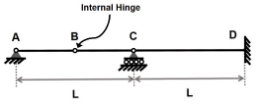
The height (in m) at which wind force acts on a moving vehicle on a bridge deck is _____. (Answer up to one decimal place)
In the analysis of thick cylinders subjected to internal pressure, radial and hoop stresses vary




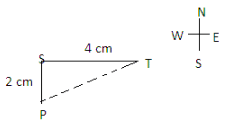
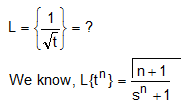


 is equal to
is equal to










